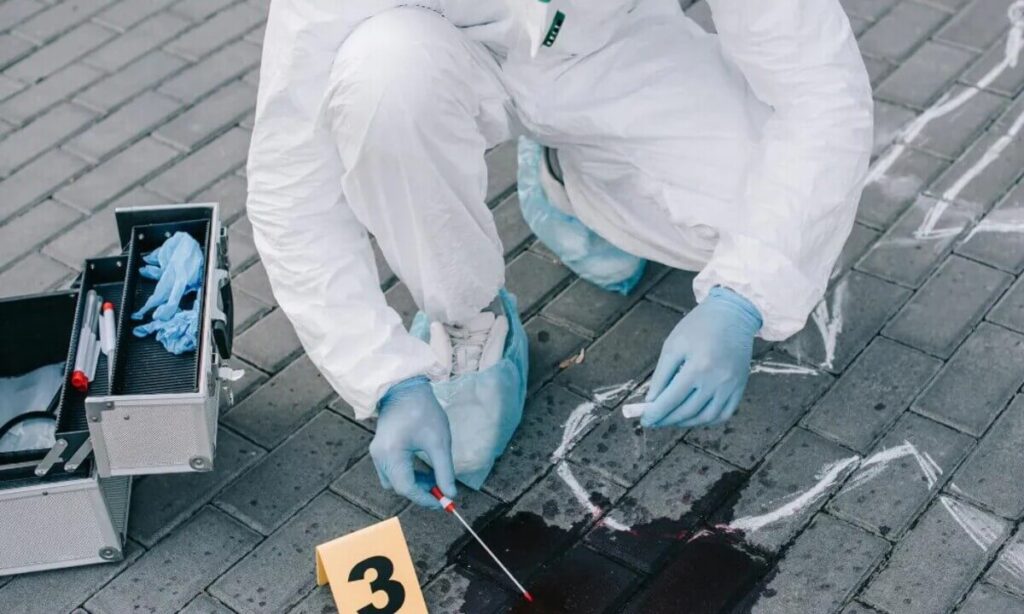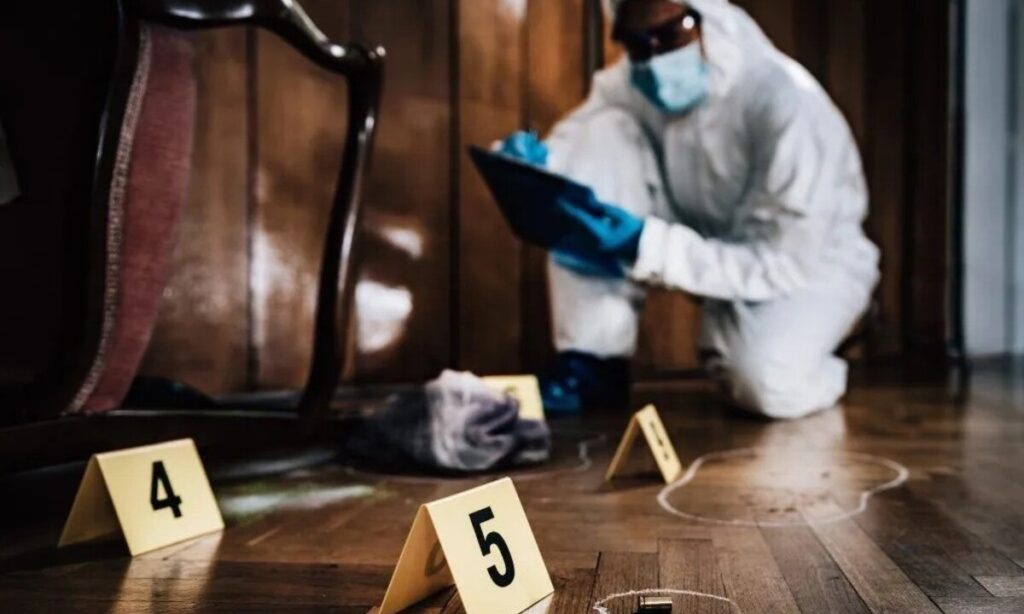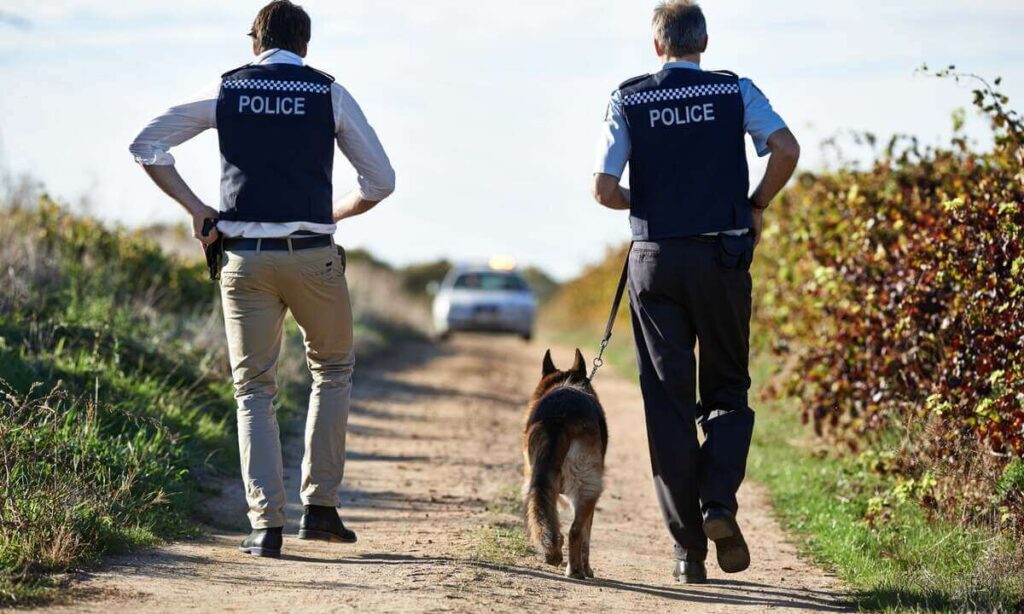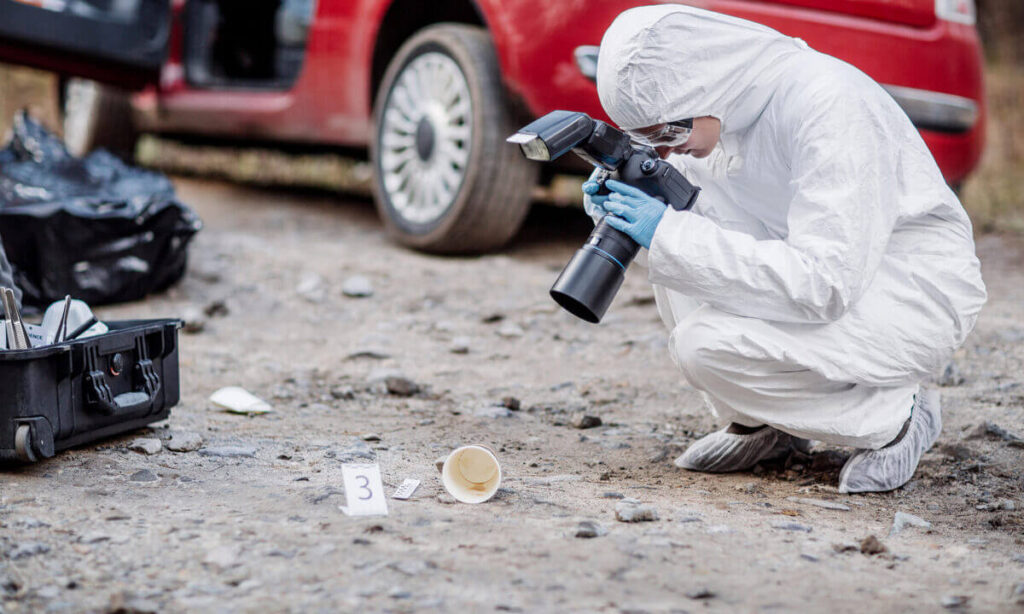Blood spatter analysis or bloodstain analysis is a fascinating subject of forensic science that involves the investigation and interpretation of bloodstain patterns at crime scenes. As a blood spatter analyst, your job is critical in reconstructing the events that occurred during a crime, which can help detectives establish the sequence of events and, eventually, aid in solving the case. In this complete guide, I will lead you through the stages of becoming a blood spatter analyst and provide you with unique insights into this fascinating career.
The Role of a Blood Spatter Analyst
Before delving into the process of becoming a blood spatter analyst, it is critical to grasp their position in the field of forensic science. Blood spatter analysts are in charge of studying bloodstain patterns discovered at crime scenes. They can detect the type of injury that caused the bloodshed as well as the direction and velocity of the bloodstains by evaluating the size, shape, and distribution of the bloodstains. This information can be vital in assessing the victim’s and assailant’s positions, the weapon used, and even the number of criminals involved in the crime.
A blood spatter analyst collaborates with other forensic experts, law enforcement agencies, and legal professionals to give accurate and objective analysis. They frequently attend crime sites to gather blood samples, take photographs, and draw precise diagrams of bloodstain patterns. Back in the lab, they use numerous scientific techniques, such as luminol testing and DNA analysis, to support their conclusions. As a result, attention to detail, critical thinking abilities, and a strong scientific background are required for a good blood spatter analyzer.
Steps to Become a Blood Spatter Analyst
1. Education
A solid educational background is required to start a career as a blood spatter analyst. The majority of prospective blood spatter analysts study forensic science, biology, or a related discipline. Typically, a bachelor’s degree is required, while some roles may demand a master’s degree or more. It is rather important to select a curriculum that offers extensive forensic science education, as well as specialized courses in bloodstain pattern analysis.
You will develop a thorough understanding of scientific principles, biology, chemistry, mathematics, and physics during your undergraduate studies. Courses like crime scene investigation, forensic photography, and evidence collecting will also help you prepare for the practical side of the field. Participating in internships or cooperative education programs to acquire hands-on experience in a forensic laboratory or crime scene unit is also valuable.
2. Internship and Training
After completing your studies, it is strongly advised that you seek internships or training opportunities at a forensic laboratory or crime scene unit. These hands-on experiences will allow you to apply your knowledge in real-world circumstances, work with seasoned professionals, and build the skills needed to flourish in the area. In addition, this hands-on training will offer you with essential insights into the difficulties of bloodstain pattern analysis, evidence gathering, and laboratory processes.
During your internship and training time, you will have the opportunity to master numerous techniques and technologies used in blood spatter analysis. You will learn how to document crime scenes, obtain blood samples, and analyze bloodstain patterns using specialist software and equipment. You will also get a sharp eye for detail and learn how to successfully communicate your findings through written reports and expert evidence.
3. Certification
While certification is not necessarily required to work as a blood spatter analyst, it can considerably improve your credibility and career possibilities. The International Association of Bloodstain Pattern Analysts (IABPA) is one of several organizations that offer certification programs specifically targeted to bloodstain pattern analysis. These programs usually include written and practical exams to evaluate your knowledge and skills in blood spatter analysis.
Certification verifies your competence and increases your professional reputation while demonstrating your dedication to the field. It also allows for continued study and networking with other professionals in the sector. Furthermore, some organizations may demand or prefer certified blood spatter analysts, therefore certification can be a great asset in your profession.
Skills and Qualities of a Blood Spatter Analyst
Being a blood spatter analyst involves a distinct set of abilities and characteristics. The following are some of the main characteristics required for success in this field:
1. Attention to Detail
Blood spatter analysis requires close attention to detail. You will examine patterns, drops, and stains as an analyst to discover the mechanisms and angles of bloodshed. The capacity to detect and understand minor facts is critical for making judgments and reconstructing crime scenes.
2. Strong Analytical and Problem-Solving Skills
Analyzing blood spatter patterns calls for significant problem solving. To correctly analyze the evidence, you will need to apply scientific principles and mathematical calculations. A blood spatter analyst must be able to think critically, examine facts, and reach logical conclusions.
3. Excellent Communication Skills
As a blood spatter analyst, you will frequently be required to submit your results in court or to collaborate directly with police enforcement. Strong communication skills are required to properly communicate complicated scientific concepts to a variety of audiences, including lawyers, investigators, and jurors.
Job Outlook and Salary Potential
The job outlook for blood spatter experts is promising, with constant demand anticipated in the coming years. As crime rates rise, so will the demand for trained forensic professionals, particularly blood spatter analysts. However, due to the specialized nature of the work, competition for positions in this industry can be fierce.
In terms of earning potential, blood spatter analysts can earn a good living. The specific wage will vary depending on experience, region, and the hiring firm. According to Glassdoor, a blood spatter analyst may expect to earn $62,000 to $101,000 per year on average, with the possibility for higher earnings as your career progresses.
Tools and Equipment Used in Blood Spatter Analysis
To gather and evaluate evidence, blood spatter analysis calls for the use of a variety of tools and equipment. The following are some of the most important tools utilized by blood spatter analysts:
1. Luminol and Alternative Chemical Reagents
Luminol is a chemical reagent often used to detect trace amounts of blood at crime scenes. It combines with the iron in hemoglobin to produce a faint blue glow in the blood. Other chemical reagents, such as Bluestar and Fluorescein, can be employed to improve the visibility of bloodstains.
2. Stringing and Protractor Kits
Stringing and protractor kits are used to detect the direction of blood droplets and quantify bloodstain angles. These kits often include strings, rulers, protractors, and templates to aid in correct measurements and calculations.
3. Microscopes and Photography Equipment
Microscopes are required for microscopic examination of bloodstain patterns. They enable blood spatter analysts to examine individual blood droplets’ size, shape, and texture. High-resolution cameras and tripod stands are utilized to photograph the bloodstain patterns for subsequent investigation and presentation.
Challenges and Ethical Considerations
While blood spatter analysis can be a fulfilling profession, it also has its own set of problems and ethical concerns. Some of the difficulties that blood spatter analysts confront are as follows:
1. Subjectivity in Interpretation
Blood spatter pattern interpretation can be subjective, and various analysts may reach different conclusions based on the same information. This subjectivity can lead to legal issues, as rival experts may provide contradictory views.
2. Emotional Toll
Working at crime scenes and violent situations can be emotionally draining for blood spatter analysts. The nature of the profession heavily involves exposure to graphic and frightening scenes, which can result in stress, anxiety, and trauma. Analysts must practice self-care and seek assistance when necessary.
3. Ethical Considerations
Blood spatter analysts must uphold high ethical standards in their job. This involves assuring the accuracy and integrity of their analysis, avoiding conflicts of interest, and reporting their conclusions in a transparent and objective manner. Maintaining the reputation of the profession requires adhering to ethical rules.
FAQs
1. What educational background is required of blood pattern analysts?
A Bachelor’s degree in forensic science, biology, chemistry, or a similar discipline is often required to become a blood spatter analyst. Advanced schooling or a specialization in bloodstain pattern analysis can also help advance one’s profession.
2. What qualifications does a bloodstain pattern analyst possess?
A blood spatter analyst should have attention to detail, strong analytical and problem-solving skills, great communication skills, and the capacity to work under pressure, in addition to a strong educational background. Internships and voluntary work are also excellent ways to gain practical experience.
3. How hard is it to be a blood spatter analyst?
A solid educational foundation in forensic science or a related subject, analytical abilities, and practical experience are required to become a blood spatter analyst. The task requires attention to detail and precision in evaluating bloodstain patterns at crime scenes, and the competition for places can be fierce.
4. Who was the first scientist to analyze blood spatter?
Dr. Eduard Piotrowski, a Polish physician, was the first to analyze blood spatter patterns and published a complete work on the subject in 1895. His groundbreaking work set the groundwork for modern bloodstain pattern analysis.
5. What does bloodstain pattern analysis examine?
To recreate events, bloodstain pattern analysis investigates the physical properties of bloodstains at crime scenes. It can determine the direction, angle, and velocity of impact, which might assist forensic professionals in understanding how and where bloodshed occurred, thus assisting in crime scene reconstruction and investigations.
Conclusion and Final Thoughts
To summarize, being a blood spatter analyst includes a mix of education, training, and hands-on experience. It is a difficult but rewarding career that plays an important role in criminal investigation and resolution. You can set yourself on the path to becoming a professional blood spatter analyst by following the steps given in this article.
Remember that a solid educational foundation, hands-on experience, and professional certification are essential components of a successful career in this industry. As you continue on this road, stay committed, aim for excellence, and constantly upgrade your knowledge and skills to stay at the forefront of blood spatter analysis. As a blood spatter analyst, you can make a huge effect if you have enthusiasm, dedication, and a devotion to truth and justice. All the best!
Did you find this article helpful? Check out our article on the 12 Most Popular Careers in Crime Scene Investigation (CSI). Thanks for reading!






